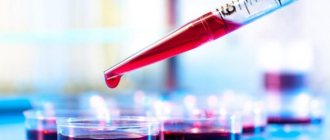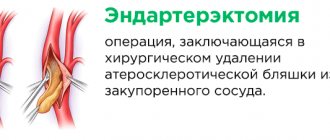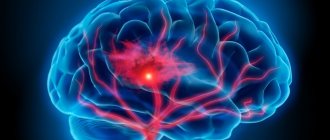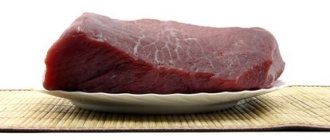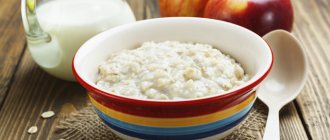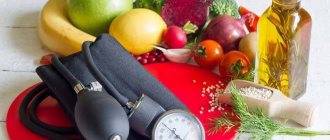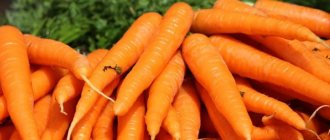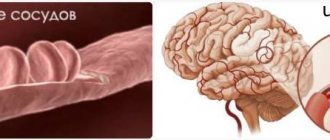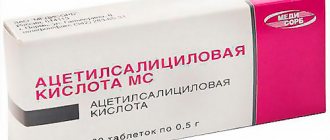Diseases of the cardiovascular system are considered diseases of the 21st century. In the vast majority of cases, the causes of death are precisely complications from this part of the body. Very often, the cause of heart attacks, strokes, thrombosis and other ischemic and thrombotic processes is atherosclerosis. It develops as a result of a long-term increase in cholesterol in the blood and its deposition on the walls of blood vessels.
One of the main reasons is the incorrect selection of foods in the daily diet. Hundreds of drugs have been invented to treat this disease, but they all become effective only when the necessary diet for atherosclerosis is followed.
Basic rules of nutrition for atherosclerosis
Proper nutrition for atherosclerosis is aimed at limiting the rate of development of the disease. By selecting a diet, they try to balance lipid metabolism, reduce excess fat deposits, and stabilize blood circulation.
A combination of products is selected individually that will provide the required ratio of proteins, lipids and carbohydrates. Typically, the daily menu should consist of:
- 40% - polysaccharides (cereals and vegetables)
- 20% - vegetable fats (composed of various vegetable oils)
- 20% — protein component (low-fat meat)
- 10% - mono- and disaccharides (quickly absorbed sugars)
- 10% - animal fats (in hard cheese or cream)
In addition to the composition of the diet based on its energy value, there are a number of generally accepted rules for a hypocholesterol diet.
- Meals should be fractional, up to 6 times a day, but in small portions.
- The peculiarity of cooking lies in the most useful way of processing it. Fried foods are limited and preference is given to boiled, steamed and baked dishes. Thus, the body will also receive a lot of useful substances that are lost during frying. In the treatment of atherosclerosis, vitamins are especially important, which can also be preserved by these types of food preparation.
- The correct ratio of the diet in terms of energy value.
- Reducing the share of sweets.
- Increase the amount of foods that contain compounds such as Omega-3 and Omega-6 fatty acids. These include, primarily, seafood and fish oil.
- Increasing fiber foods. It promotes accelerated excretion (removal) of cholesterol from the body.
Now let’s answer the question of what you can eat – what foods and in what quantity.
You can: healthy, permitted products
Let’s separate all parts of the daily menu, highlight what patients with atherosclerosis need to eat, and note which are the healthiest foods in diet therapy.
- Fish products. For atherosclerosis, low-fat seafood is preferable in the diet - firstly, they are healthier, and secondly, parasites are less common in them than in river fish. In addition, it contains a lot of unsaturated acids - Omega 3. This substance, circulating in the bloodstream, cleanses blood vessels of already formed cholesterol deposits on their walls.
- Meat dishes. The meat is not fatty, without excess fat. The cooking method is mainly baking or boiling. Also, it helps preserve micro-, macroelements and other compounds that prevent the development of atherosclerosis.
- Soups: it is advisable to eat fruit (prevention of vitamin deficiencies), dairy (low-fat dairy products) and vegetable soups.
- Vegetables and fruits. It is advisable to significantly increase their volume in the daily menu. What can you eat? Cabbage, carrots, apples, fresh green peas and cucumbers are preferred in the patient's diet. These products ensure adequate functioning of the digestive system. Can I have potatoes? Yes, but exclusively in boiled and baked versions.
- Floury. Here, in the patient’s diet, products from lower flour varieties, rye bread, dry bread, biscuits, and grain bread are preferred. The total amount of bread is moderate.
Restrict: restricted foods
Some products are acceptable in the diet for atherosclerosis, but strictly in small quantities. These products include bread - preferably mostly rye. It is advisable to limit fermented milk products in food - leave milk and low-fat butter on the menu.
Diet No. 10
Diet number 10 is considered a universal cholesterol-free diet; it is prescribed for various types of atherosclerosis.
With such a diet, you need to strictly control the amount of fluid consumed. The patient should drink no more than 1.2 liters of liquid, tea and coffee inclusive. You should eat six times a day.
Following diet No. 10, a patient can consume a maximum of 2500 kcal per day. For obesity, this figure is 1800 kcal. Proteins - 100g, fats - 70-80g.
Salt no more than 3g per day. The amount of salt should be calculated even in prepared foods (for example, bread). Food can be boiled and then baked. Cook soups using lean broth; it is better to give preference to milk soups.
See also on the blog: Nutrition principles for a hypoallergenic diet
Acceptable products:
- Lean chicken, turkey, rabbit
- Fish allowed: salmon, tuna, trout, cod
- Low-fat dairy products
- Vegetables fruits
- Wholemeal bread
- Cereals, pasta
- Nuts
- Weak tea, coffee, still water, sugar-free nectars
Prohibited products:
- Butter
- Fatty meat, sausages, pates
- Soups with fatty broths
- Full fat dairy products
- Fat cheeses (fat content more than 30%)
- Fried potatoes
- Butter dough
- Mayonnaise
- Sweets (marmalade, honey, marshmallows are available in limited quantities)
Features of the diet depending on the affected area
Atherosclerosis can be either a multifocal disease or have a limited localization. For some types of location of the focus of atherosclerosis, there are features and differences in the therapeutic diet.
Vessels of the brain and neck
The diet for diagnosed cerebral and neck vascular atherosclerosis must necessarily include foods with P and B vitamins, fiber, ionized magnesium and potassium. B vitamins not only exhibit anti-atherosclerotic activity, but are also neuroprotectors - they make the cells of the nervous system more resistant to hypoxia and stabilize the conduction of nerve impulses.
It is better to add juices from berries and vegetables, rosehip decoction, soups, buckwheat, and oatmeal to your diet. What should you not eat if you have sclerosis of the cerebral arteries? Dairy fats and excess salt are excluded.
Making a menu
To make it easier to exclude prohibited foods from the diet and include healthy ones in case of atherosclerosis, for convenience you need to create a sample menu. This method will allow you to navigate without unnecessary effort in all food groups and eat only those that will not cause any harm, but only benefit.
As an example, below are dishes for two days, by analogy with which you can create a menu for all other days.
First day:
- Breakfast: porridge in the form of oatmeal, vegetable salad, a cup of chicory.
- Second breakfast: a small piece of steamed (or boiled) meat, some low-fat cottage cheese and a fruit of your choice.
- Lunch: cabbage soup, stewed potatoes with zucchini and boiled meat, dried fruit compote without sugar.
- Afternoon snack: a glass of low-fat kefir.
- Dinner: boiled or baked fish with mashed potatoes, weak tea and any fruit.
Second day:
- Breakfast: an omelet of one or two eggs, a cup of weak coffee.
- Second breakfast: fresh cabbage salad with cucumber and vegetable oil.
- Lunch: squash soup with pearl barley, steamed chicken cutlets, berry broth.
- Afternoon snack: low-fat cottage cheese with orange or apple.
- Dinner: millet porridge with pumpkin and boiled fish.
In addition to all the listed products, for atherosclerosis, 200 grams of wheat or rye bread are allowed with each meal.
Popular diets
The menu for vascular atherosclerosis should be compiled under the supervision of a treating specialist . The main thing is not only to moderate yourself in a number of foods, but also not to overdo it, so that the body receives the required amount of vitamins and elements. The most well-known diets are vegetarian, low-carb, paleo, intermittent fasting, and hospital diet table No. 10. Let's look at each menu in more detail.
Dietary table No. 10
To reduce cholesterol levels in persistent hypertension and other conditions requiring inpatient hospitalization, the “tenth diet” is prescribed - table 10c. Particular attention is paid to products that stabilize blood flow and pressure. The diet is divided, from four to six meals a day , the last of which is allowed one and a half hours before bedtime. The diet includes fruits and vegetables, dairy and vegetarian soups with various cereals, pasta and low-fat ham are allowed in small quantities.
All dishes are prepared mainly either steamed, boiled, or baked in the oven. Dairy, meat and fish products - in moderate volume and low fat content. Table No. 10 excludes dishes with garlic, onions, mushrooms, smoked and salted foods.
Low carb diet
A low-carbohydrate diet for atherosclerosis is a type of nutrition in which foods containing slow carbohydrates are minimized, and fast carbohydrates are completely eliminated from the daily menu. Among the products, vegetables and fruits, beans, low-fat cottage cheese, boiled fish or meat predominate.
It is important to remember that a low-carbohydrate diet is not used for renal pathologies, pregnancy and lactation.
Paleo diet
The paleo diet is a type of diet from which processed foods and other ready-made factory products are almost completely excluded. Sugar, honey, all grains, legumes, and dairy products are prohibited. In fact, the menu in this case consists only of vegetables and meat. Many experts claim that it is the paleo approach that allows you to stop the development of atherosclerosis, lose weight and generally improve your health.
Intermittent fasting
As many years of research in medical circles have shown, fasting and atherosclerosis are quite closely interrelated. During fasting, the body begins to utilize excess bad cholesterol, which is deposited in adipocytes and lipocytes (fat cells). In addition, half a day after the start of fasting, the breakdown of excess low-density lipoproteins begins to synthesize energy from them. As we can see, both of these mechanisms can help in the treatment of atherosclerosis.
The main thing in this technique is accuracy. Fasting should be rare and short-term - it is recommended not more than one fast per week, but only after consulting with your doctor. On all remaining days, you must adhere to the normal hypocholesterol menu.
Vegetarianism
The main beneficial factor of vegetarianism for atherosclerosis is that animal food is excluded from the diet. With it, animal lipids, which cause an increase in cholesterol in the blood, do not enter or absorb into the body. The positive effects of vegetarianism have not been proven and are not recommended for use by classical medicine.
Purpose of diet No. 10C:
slow down the development of atherosclerosis, reduce metabolic disorders, improve blood circulation, reduce excess body weight, provide nutrition without overloading the cardiovascular and central nervous system, liver, and kidneys.
General characteristics of diet No. 10C:
the diet reduces the content of animal fat and easily digestible carbohydrates. Proteins correspond to the physiological norm. The degree of reduction of fats and carbohydrates depends on body weight (see two diet options below). Table salt, free liquid, extractives, cholesterol are limited. The content of vitamins C and group B, linoleic acid, lipotronic substances, dietary fiber, potassium, magnesium, microelements (vegetable oils, vegetables and fruits, seafood, cottage cheese) has been increased. Dishes are prepared without salt; food is added at the table. Meat and fish are boiled, vegetables and fruits with coarse fiber are chopped and boiled. The food temperature is normal.
Chemical composition and calorie content of dietary table No. 10C:
First option:
carbohydrates - 350-400 g (50 g sugar), proteins - 90-100 g (50-55% animal), fats - 80 g (40% vegetable), calories - 2600-2700 kcal;
The second version of dietary table No. 10C
- with concomitant obesity: carbohydrates - 300 g, proteins - 90 g, fats - 70 g, calories - 2200 kcal;
free liquid - 1.2 l, table salt - 8-10 g, cholesterol - 0.3 g.
Nutrition regimen for diet No. 10C:
5 times a day in small portions.
Recommended and excluded foods and dishes:
Vegetable soups (cabbage soup, borscht, beetroot soup), vegetarian with potatoes and cereals, fruit, dairy. Excludes: meat, fish, mushroom, and legume broths;
bread and flour products Wheat from 1-2nd grade flour, rye from sifted flour, peeled; grain, doctor's bread. Dry, unpalatable cookies. Baked goods without salt with cottage cheese, fish, meat, adding ground wheat bran, soy flour. Excludes: products made from butter and puff pastry;
meat and poultry Various types of meat and poultry, only lean varieties, boiled and baked, in pieces and chopped. Exclude: fatty varieties, duck, goose, liver, kidneys, brains, sausages, smoked meats, canned food;
fish Low-fat types, boiled, baked, in pieces and chopped. Seafood dishes (scallops, mussels, seaweed, etc.). Exclude: fatty species, salted and smoked fish, canned food, caviar;
dairy products Low-fat milk and fermented milk drinks, 9% fat and low-fat cottage cheese, dishes made from it, low-fat, lightly salted cheese; sour cream - in dishes. Exclude: salty and fatty cheese, heavy cream, sour cream and cottage cheese;
eggs White omelettes; soft-boiled eggs - up to 3 pieces per week. Limit: egg yolks;
cereals Buckwheat, oatmeal, millet, barley, etc. - crumbly porridges, casseroles. Krupeniki. Limit: rice, semolina, pasta;
vegetables Various dishes from cabbage of all types, beets, carrots - finely chopped, zucchini, pumpkin, eggplant, potatoes; green peas in the form of puree. Fresh cucumbers, tomatoes, salad. Greens - in dishes. Excludes: radish, radish, sorrel, spinach, mushrooms;
snacks Vinaigrettes and salads with vegetable oil, including seaweed, salads with seafood, boiled jellied fish and meat, soaked herring, low-fat, lightly salted cheese, dietary sausage, low-fat ham. Exclude: fatty, spicy and salty foods, caviar, canned snack foods;
fruits, sweet dishes, sweets Raw fruits and berries, dried fruits, compotes, jellies, mousses, sambucas (semi-sweet or xylitol). Limited or excluded (for obesity): grapes, raisins, sugar, honey (instead of sugar), jam. Excludes: chocolate, cream products, ice cream;
sauces and spices Vegetable broth, seasoned with sour cream, milk, tomato, fruit and berry sauces. Vanillin, cinnamon, citric acid. Limited - mayonnaise, horseradish. Excludes: meat, fish, mushroom sauces, pepper, mustard;
drinks Weak tea with lemon, milk; weak natural coffee, coffee drinks, vegetable, fruit and berry juices. A decoction of rose hips and wheat bran. Excludes: strong tea and coffee, cocoa;
fats Butter and vegetable oils - for cooking, vegetable oils - for dishes. Dietary oil. Excludes: meat and cooking fats.
Sample diet menu No. 10C.
First breakfast: low-fat cottage cheese pudding, crumbly buckwheat porridge, tea. Second breakfast: fresh apple. Lunch: pearl barley soup with vegetables in vegetable oil, steamed meatballs, stewed carrots, compote. Afternoon snack: rosehip decoction. Dinner: vegetable salad with seaweed and vegetable oil, fish baked in milk sauce and boiled potatoes, tea. At night: kefir.
Basic principles
Doctors never tire of reminding patients about the importance of following a diet in the treatment of atherosclerosis. The fact is that studies have convincingly proven that therapy against the background of a strict anti-cholesterol diet gives better results than when food products are selected randomly.
In the initial stages of the disease, you can do without medications; a diet for atherosclerosis of the heart vessels helps to cope with the disease. Good treatment results, subject to diet, were obtained in experimental groups of patients with lesions of the arteries of the neck, brain, and lower extremities.
The diet should be selected individually, taking into account test results. So:
- patients whose cholesterol levels are normal, but have signs of the development of atherosclerosis with damage to the vessels of the lower extremities, heart, neck or brain, are advised to adhere to a balanced diet, give up bad habits and normalize their rest and physical activity;
Advice! Physical activity should be moderate, the training program is selected individually, depending on the type of disease and the degree of vascular damage. Thus, with atherosclerosis of the arteries of the lower extremities, it is recommended to engage in walking, skiing, and swimming.
- For patients whose cholesterol levels are at the upper limit of normal, a special diet is recommended. In this case, medications are usually not prescribed;
- Patients with atherosclerosis, whose cholesterol levels are highly elevated, are advised not only to carefully select foods, but also to take special medications.
Basic rules for preparing a diet
Doctors who studied the problems of treating atherosclerosis, which affects the arteries of the neck, heart, lower extremities, and brain, developed basic nutritional rules for patients. These are the rules that every patient with atherosclerosis should remember:
- it is necessary to reduce the total fat content in the diet;
- it is advisable to completely eliminate or minimize the amount of animal fats (fat dairy products, butter, lard, fatty meat), replacing them with vegetable fats;
- the diet should contain more polyunsaturated fatty acids, their main source is fish and seafood;
- The diet should contain more fiber and complex carbohydrates. These are various whole grains, vegetables;
- salt intake should be significantly reduced. Moreover, you also need to give up salty foods - canned food, sausages, etc.
Advice! The diet of a person with normal body weight should contain about 100 grams of protein, 70 grams of fat (at least half of the norm should consist of vegetable fats), 400 grams of carbohydrates. The total calorie content should be about 2500 kcal. If you are overweight, adjustments are made to the diet, reducing its calorie content.
General nutritional rules to prevent atherosclerosis
In many ways, following a few simple rules in nutrition helps prevent the occurrence of atherosclerosis of the leg veins, which is the most dangerous form of pathology, since it manifests itself only at the moment when the patency of the vessels is already significantly impaired and complications begin to develop. In a particularly advanced form, the disease causes gangrene and causes loss of lower limbs.
The basic nutritional rules are:
- ½ serving of food should consist of vegetables or fruits.
- 1/3 of the serving consists of foods rich in slow carbohydrates (for example, porridge).
- 1/3 of a serving is protein food, including animal fats.
- Eating only boiled, steamed or baked food. Fried and smoked foods are prohibited.
A fairly new dietary recommendation for atherosclerosis of the blood vessels of the legs and to prevent it is the daily consumption of at least 100 g of fruits or vegetables having the following colors:
- red;
- orange;
- yellow;
- white;
- green;
- burgundy
Separately, it is worth highlighting garlic and flax seed, which should be in the daily diet, as they help break down existing plaques, especially in the lower extremities.
